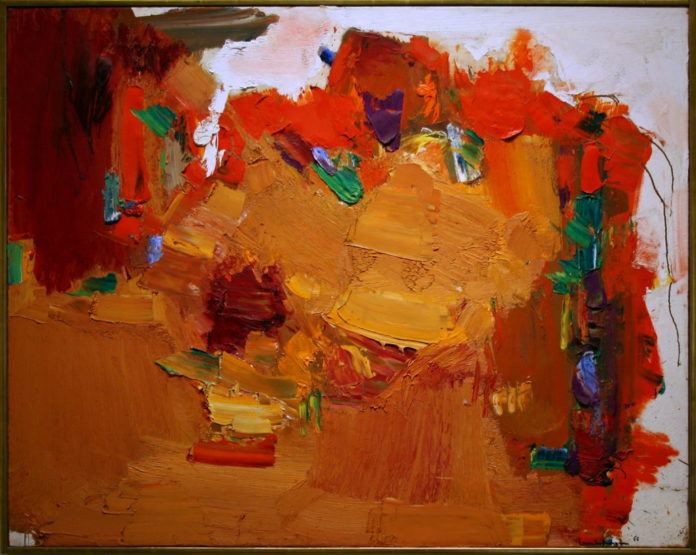
Notes on the Music of Sound II: Timbral Music and Plastic Values
Daniel Barbiero
1
Much contemporary experimental music puts sound color, or timbre, to the foreground, generally through extended techniques or other unconventional approaches to sound production on acoustic or electronically-altered acoustic instruments, or through the use of exclusively electronic means. When timbre supplants pitch or harmony as primary compositional elements, texture becomes a fundamental site of organization.
Unlike more conventional music, which may be organized according to the principles of pitch sets, functional harmony, theme-and-variation, and so forth, works centered on timbral qualities embody a distinctly different set of organizational features arising from what might be called the plastic impulse in music—that is to say the shaping of form through the arrangement of timbral sound elements. These organizational features can be described as consisting in a range of plastic values, or formal qualities. Whether or not timbral works are composed with these plastic values in mind, they are liable to be heard as if they were, and are liable to analysis in these terms. By definition such an analysis would be qualitative in nature; thus these notes are meant as a kind of phenomenology of timbral music—a necessarily subjective description of how we hear timbral music.
2
Although sometimes used interchangeably in describing sound-based music, timbre and texture can be distinguished.
Color or timbre is a property of a sound, specifically those qualities of a sound resulting from the way in which it is produced.
Texture refers to the sonic properties of the work as a whole. The suggestion here is that the formal organization of a work made up of timbral elements will be embodied in, and perceptible through, its overall textures. There is a role for pitch in predominantly timbral works, but the color properties of any given pitch will be of primary concern when considering the work’s texture.
Put another way, timbre describes qualities of the work at the micro level, while texture describes qualities of the work at the macro level.
3
In many ways timbral sound works are analogous to abstract paintings—arrangements of colored passages in relation to each other and to an external frame, the external frame in a musical work being the points marking the beginning and ending of the work’s duration. (Paintings are framed in space; musical pieces are framed in time.) Thus some of the following descriptive taxonomy of the plastic values found in timbral music derives from the vocabulary of abstract painting or from color theory more generally. This is at least in part an analysis rooted in an analogy.
4
A basic taxonomy of the plastic values pertinent to the formal organization of timbral music could include:
1. Presence/absence
2. Density/sparseness
3. Saturation
4. Contrast
5. Proportion
6. Integration/separation
7. Accumulation/reduction
8. Transformation
Some observations:
The first five terms or pairs of terms describe qualities that are time-independent or static, while the last two describe qualities that are dynamic, i.e., involving motion in time. Put another way, the first four items describe at least momentarily stable outcomes of actions, while the last two describe (some of) the actions needed to get there. The sixth item occupies something of a middle ground since it can describe an action or, when restated as integrated/separated, can describe an outcome.
The first, second, sixth and seventh qualities are described in binary terms, but with the exception of presence/absence and in some cases of integration/separation, these terms are best seen as poles between which an entire continuum stretches rather than as describing either/or situations. For example a passage of a composition or performance can be more or less dense or sparse, more or less saturated, or have elements that are more or less integrated or separated. Similarly, accumulation and reduction are processes that take place along a spectrum. As in many instances, judgments may vary from listener to listener.
Whether or not sound is present or absent is the most basic of formal qualities available to a composition.
Density is a relative quality pertaining to the weight or mass of the sound. The more sound or sound events present in a given duration the denser the texture, and vice versa; in a sense density is a function of the degree of presence or absence of sound in a given duration.
Saturation refers here to the intensity of sounds. It is equally applicable to the individual timbre as it is to the overall texture. A robustly bowed open string of a cello or double bass is a thick, intense sound; the bowed harmonics or use of flautando on the same instruments are by contrast thin, less intense sounds. Scaling up from the individual sound to the collective, a passage made up of predominantly intense individual sounds would itself be heard as highly saturated. Likewise with dynamics. A dynamically intense passage can be thought of as highly saturated and a less dynamically intense passage as less so.
Saturation and density differ in that saturation has to do with the intensity of a passage, whereas density has to do with the weight or mass of a passage. Whether or not we tend to hear dense passages as intense is an interesting and ultimately phenomenological question.
Contrast is a property not only of the timbres appearing in any given passage—which will exhibit varying degrees of, e.g., brightness, resonance, surface, saturation and so forth–but can be heard in relation to other organizational qualities as well. When comparing passages within a work or performance we can hear contrasts of saturation, density, accumulation and reduction, or presence vs absence of sound.
Proportion describes the quantitative relationships of juxtaposed timbres in which some are dominant and some are subdominant or provide accents. The perceived overall texture is affected by which timbres dominate and which take on subdominant or accentual roles.
Like proportion, integration and separation are relational terms. They describe sound events’ movement away from or toward each other, or (when put in adjectival form) the quality of their being with or separate from each other.
Transformation pertains to the motility of sounds and sound complexes and describes the process during which sounds emerge from the absence of sound or from a preceding sound or sounds, entailing a shift of texture overall. In this context absence of sound may be revealed to be a kind of latency or sound in potentia. (The quality contrasting with transformation would be fixity, or the quality of a texture’s remaining unchanged for a noticeably significant duration.)
Plastic values are potentially related to each other, and may exert an influence on each other. For example, density is related to (an outcome of) accumulation/reduction. Similarly, the integration of or separation between musical events creates conditions affecting the perception of whether or not musical space of a given duration is filled or empty.
5
To return to the analogy from abstract painting: Not only the perceived overall compositional structure, but also the effect of a timbral work on the listener is a function of the interaction of the plastic values at play throughout it. Just as an abstract painting creates an illusion of physical space through what Hans Hofmann called the “push-pull” of formal elements interacting on the picture plane, the timbral work creates an illusion of aural depth through the presence or absence and accumulation and integration of sonic events sequentially and simultaneously, and through quantitative variations in and contrasts of density, saturation and motility.
The foregoing list of the formal qualities relevant to sound-centered music isn’t meant to be exhaustive but rather to be suggestive. If nothing else, there is an irreducibly subjective element involved in attempting to delineate the salient organizational features of timbral music. The qualities discussed here apply to phenomena that will be heard differently by different listeners and no doubt other listeners can come up with terms to supplement or even supplant those given above. Further complicating things is the liability of any of these phenomena to analysis in terms of multiple categories—we are capable of hearing the same sound complex and even the same individual sound in terms of more than one quality at once. This resistance to easy reduction—this near inexhaustibility of aural richness—is one of the attractions of timbral music.






